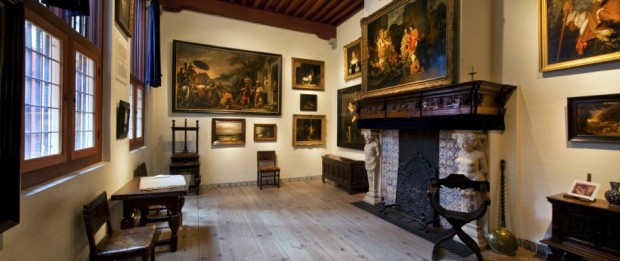THE THIRTEENTH DISCIPLE
When the curtain was pulled open at just the right angle, O’Connell could see all of it. He sometimes had to adjust his chair and move the easel a bit, but the result was spectacular. Exactly the image he needed to create his masterpiece, and the best part of it, was that no one but the cat could see him. He would work from sunrise to sunset producing his version, more prolific than any artist that has ever lived. But as daylight began to disappear and he could no longer see the reflection he needed, he would start cleaning his brushes and storing away the finished canvases in the back of the studio. When his work was finally complete and his evening meal consumed, O’Connell would return to his chair and the artist he had been during the day became a peeping tom at night.
He was an astute observer of what often went unnoticed by others, both the organic and the inorganic, the dark and the light, the real and the imagined. Fantasy became his lifeline. Having stripped himself of a personal identity, he lived his life through others, copying what made them unique and special, altering it slightly and then claiming it as his own. A non-conformist who could never give back or play on anyone else’s team, he couldn’t compete when he was just being himself … but with a slightly modified mask that could fool others, O’Connell became the master of ceremonies.
He never did it just for the money or just for the fame. It was more complicated than that. If asked, and if answered honestly, O’Connell would say he did it mainly for a seat at the table. A thirteenth disciple so to speak. One that was surrounded by the best and the brightest and revered and admired by the rest. A title that would impress, a certificate to hang on the wall and a badge to wear at all times. He could see the final product in his mind’s eye.
When his work began to be noticed and he had established his own following, it all took off for him then. O’Connell not only had a seat at the table, he had a podium as well. He went from artist to teacher and showed others of the same persuasion his exact technique for mass reproduction. As time went on and others made their contributions, it became easier and easier to duplicate the great masters. In some parts of the world, even robots were assisting, and although the quality of the work kept going down, it happened so gradually that O’Connell was sure no one else noticed.
After enough surplus had been built up, the replacement program began. First to leave were the curators and docents who could tell the difference. Then the original works themselves, some disappearing in the middle of the night and others during a designated remodel. No one was the wiser when the O’Connell copy was put in its place in an expensive looking frame and a fancy light hanging above it. Crowds still gathered around, listening with close attention to the new docents telling their fascinating tales.
When the first release didn’t alert the authorities and life went on as usual, O’Connell stepped it up a notch. At the same time they expanded the program from local shops and art centers to regional galleries and museums, he began copying ceramics. Like a diving board that keeps getting raised a bit higher with each jump, the copycats became more and more daring. Rugs, furniture, jewelry and sculptures. They tried it all. Nothing was too challenging for them, and no venue was off limits.
It was a genius plan, and O’Connell had it all worked out. Exoneration and a seat at the table in exchange for the most valuable art collection in the world. Everyone would have to pay attention to him then.
Copyright © 2015 (Michelle Parsons, Getting Back on Your Path). All Rights Reserved.

